Even though donkey farming is still relatively unknown, its milk is in high demand in India, where one liter costs a stunning 7,000 rupees. Since donkey milk is so rare and nutrient-dense, its popularity is rising. The article below details the incredible success of an entrepreneur who decided to try his hand at donkey farming, eventually drawing in crores of rupees. Let’s check out earning 7 crore rupees from donkey rearing business below.
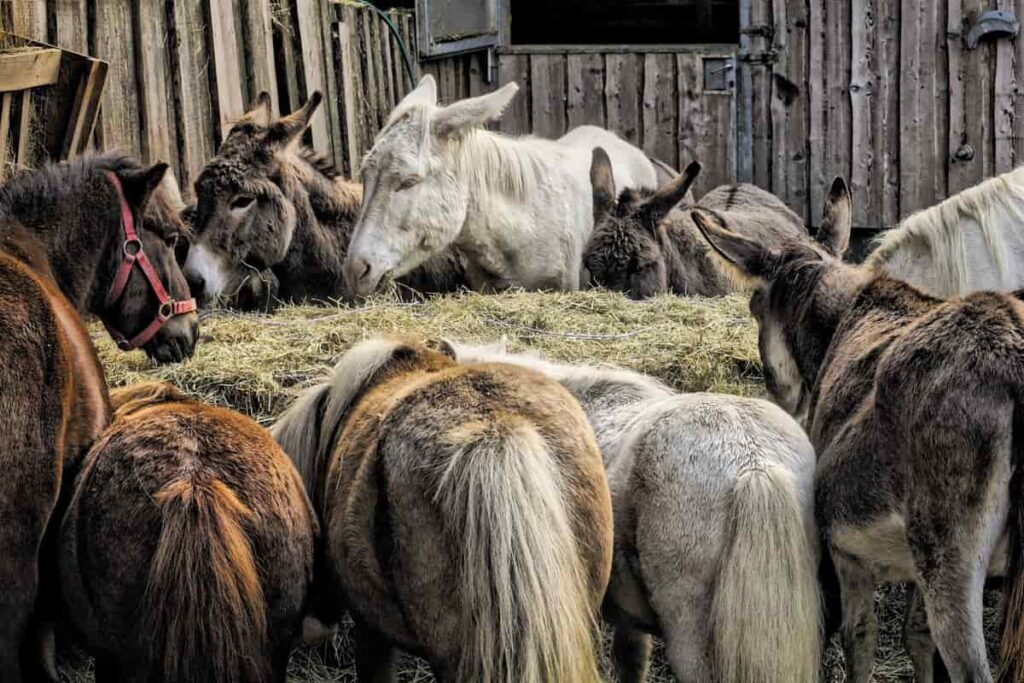
Is the donkey milk business profitable in India?
There is much money to be made while raising donkeys. Farmers are slow to recognize the benefits of donkey farming, such as the milk produced by the animals for human use and the manure used in agricultural endeavors. Farmers are oblivious to the benefits of donkey farming, especially the use of donkey milk for human health and the fertilization of crops.
Milk might cost anything from Rs. 2,000 to Rs. 7,000 for every 1,000 ml you buy. Organic manure made from donkey droppings is excellent. Both donkey milk and feces are in great demand. Embracing the donkey’s boundless potential as a symbol of purity will pave the way for the animal to enter the larger business world.
How many Litres will donkey produce per day?
Jennies, a kind of female donkey, have been prized for their milk for millennia. Donkey milk is the closest similarity to human breast milk of any dairy products other mammals produce. However, in the 19th century, it was used to nourish infants who had been abandoned. Farming donkeys are on the rise in many nations as people realize these animals’ health and economic advantages. The female donkey’s milk production is minimal compared to other agricultural animals. One liter of milk is produced daily by a single female. Because of this, fresh milk is quite scarce.
In case you missed it: Donkey Farming in India: How to Start, Breeds, Milk, Cost, and Management
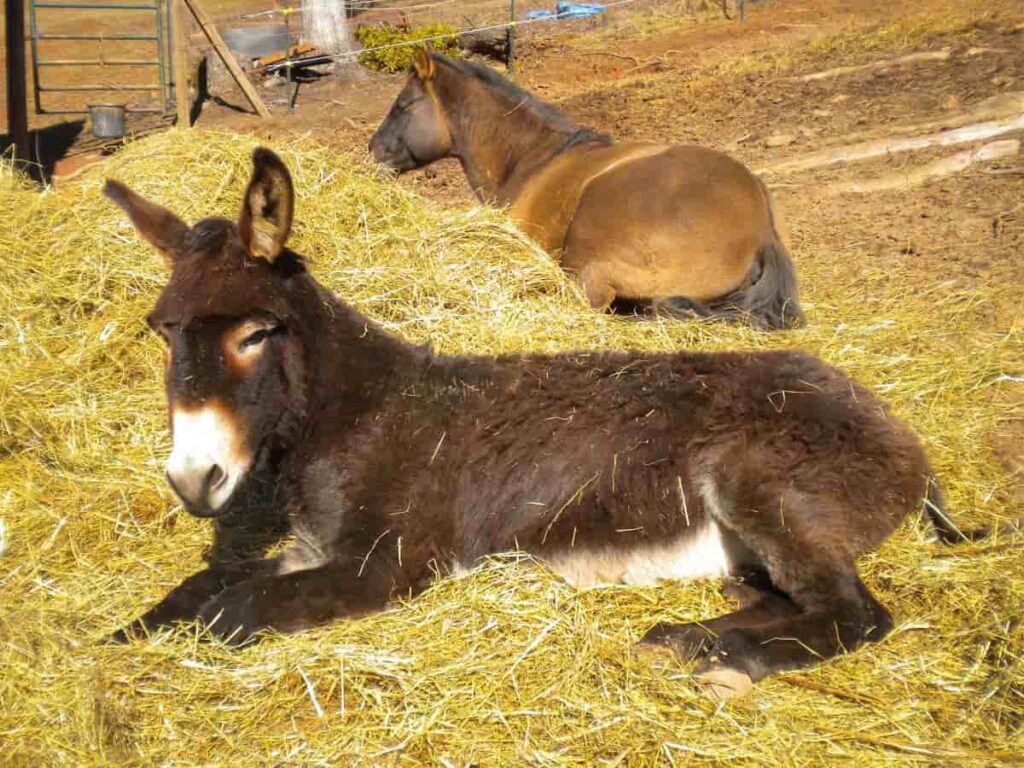
How to manage donkeys on a farm?
As a species, donkeys have earned a global reputation for their placid nature. They like to roam in herds across the grasslands. They want their food to be thinly cut. Pineapples are healthy for donkeys, especially growing foals and pregnant females. They do not chew their food as most other animals do. Donkeys should eat a diet high in rice bran and maize bran for optimal health. The donkey’s stomach can hold 9 liters of water.
The donkey is a hardy animal that can stay outside during any storm. Donkeys need the basic minimum for protection and health, including a clean, risk-free environment and a diet low in sugar and fiber. A diet heavy in fiber and low in calories, sugars, starches/carbohydrates, and protein is ideal for donkeys. Donkeys should be fed premium-grade barley or oat straw, with limited access to grass.
Working donkeys are built for a hard effort. Therefore, it may be detrimental to their health if they are kept stationary for long periods. In addition, they need to be bred and fed grass periodically, which may be expensive and need more space than first thought. People can get by with less space if they want to breed a few donkeys at first. But if there are many donkeys in the herd, the area must be broad enough to prevent them from crowding together.
Is donkey milk in demand?
Strangely enough, the city of Hyderabad is rapidly becoming a significant commercial center for donkey milk. The price of one liter of this animal’s milk has skyrocketed to an astounding Rs 7,000. Even the cleanest milk from a cow or buffalo won’t cost more than Rs 100 per liter in the city. Several farmers are raising donkeys just for their milk, so they make regular trips to Hyderabad to supply the growing demand. Since it has been proved that milk improves immunity, there is a huge demand for it. It’s being offered for Rs 100 for only 10 ml.
Donkey milk helps avoid stomach disturbances since lactic acid bacteria make up around 80% of the bacteria in donkey milk. As a result, many families in Hyderabad are looking for the same thing to improve their health. Although milk from cows and goats is high in protein, the milk from donkeys is nutrient-dense. Experts are optimistic that it might be used to treat type II diabetes. However, at this time, there is no proof of this. Farmers in Hyderabad who sell donkey milk choose their locations according to consumer demand.
In case you missed it: Earning 10 Lakh Rupees from Bamboo Cultivation: A Sucess Story of a Bamboo Farmer in India
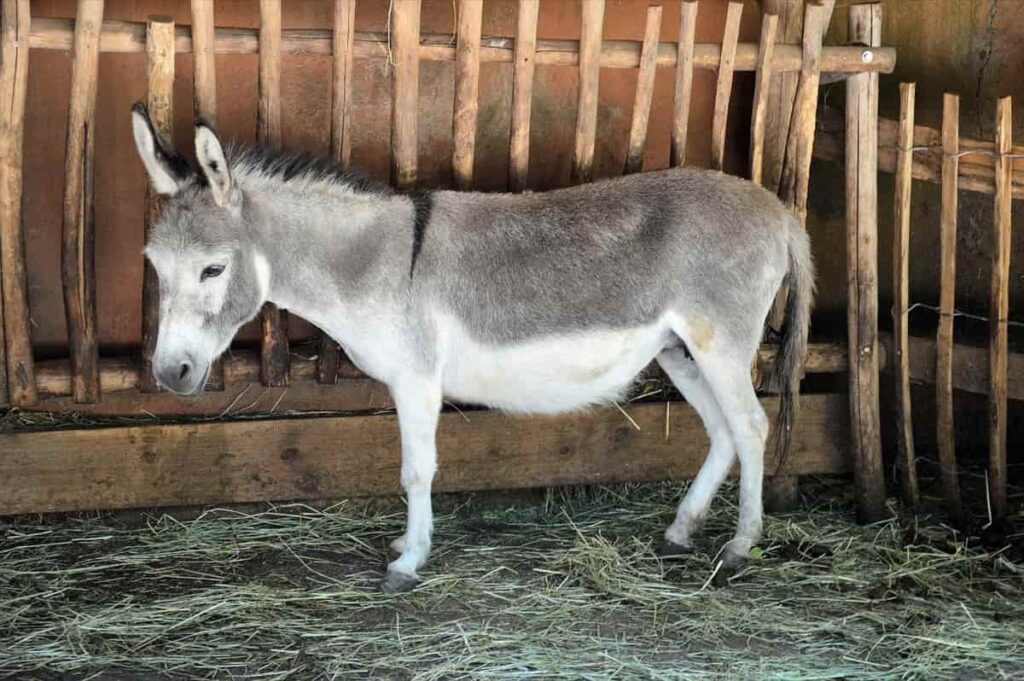
What are the benefits of Donkey milk?
Donkey milk is popular among fans for reasons unrelated to its nutritional value. Particularly, it has attracted much interest as a hypoallergenic and immune-supportive meal. Donkey milk protein has nearly the same amount of casein and whey as cow’s milk, which contains around five times as much casein. Many individuals allergic to the proteins in cow’s milk can drink donkey milk because of its lower casein level. That’s good news for those who can’t drink cow’s milk but might still use the protein and other minerals found in dairy milk.
The lack of accessibility and affordability of donkey milk is its main drawback. Donkey dairy is costly to produce and sell because of the scarcity caused by the small size and number of donkey dairy farms. Donkey milk is tough to work with in cheesemaking due to its high cost and low casein concentration. Donkey milk is not only a food product. It also has a prominent place in the beauty industry.
You may have more success locating donkey milk in the form of skin creams and soaps than you would consume it. Donkey milk’s proteins can draw and retain water, making it a superb moisturizer. Donkey milk contains proteins with antioxidant properties. They have anti-aging properties because they shield cells from oxidative damage, such as that induced by sun exposure. Skin treatments, soaps, face masks, and shampoos are some of the cosmetic items that may use donkey milk as a primary component.
Earning 7 crore rupees from donkey rearing business
The success story of Mr. Balaraju
Mr. Balraju from Godavari district, Andhra Pradesh, used to work as a software engineer in Bangalore. During the pandemic, he started working from home and is still working similarly. He has a small boy who was suffering from asthma and was also lactose intolerant. He wouldn’t drink milk, and his immunity was also not up to the mark. When they consulted a doctor, the doctor gave the necessary treatment and advised them to make him drink donkey milk.
This was the first time Mr. Balraju heard about donkey milk. In no time, he realized that donkey milk was very rare, and he couldn’t find it anywhere. After a week, one of the workers of his friend offered him donkey milk at a price of nearly 6,000 rupees per liter. He was shocked by the price. He then began to wonder why donkey milk was so costly. He thought it could make a potential business idea but didn’t know how to rear donkeys, the demand, and the market.
In case you missed it: How this Farmer Earning 60 Lakh Rupees from Thaiwan Pink Guava Cultivation
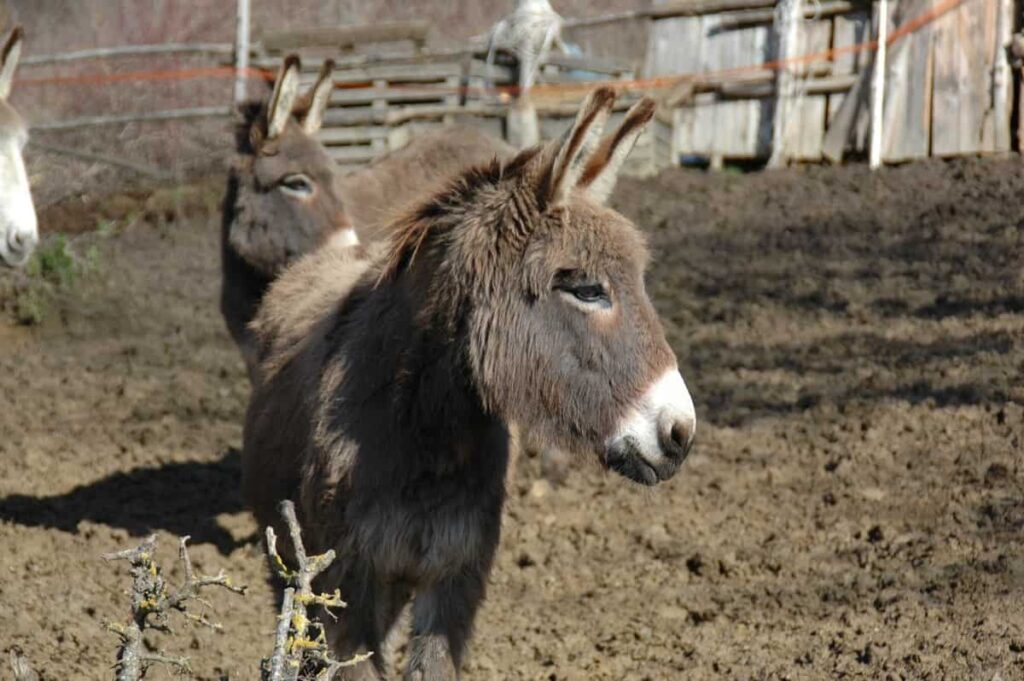
He began investigating donkey rearing and learned that there was a donkey farm in Karnataka. He, with his friends, immediately flew to Karnataka and took a tour of the donkey farm. He observed that the donkey farm was quite small, earning lakhs of rupees. He took training for three days under the staff and flew back to AP. He learned all the necessary cultivation details and was ready to start his donkey farm.
He deeply believed this was a potential business idea and could earn him many profits. As he was also free, he started planning the farm and gathered the required capital. He then started his donkey farm, and within no time, he earned huge profits. How did he do this? What are the rearing details involved in the donkey farm? What are the investment and profits involved in his donkey farm? All these questions will be discussed in this article.
Donkey rearing details, according to Mr. Balraju.
For the selection of breeds, Mr. Balraju went to Haryana, Rajasthan, and Gujarat to buy the donkeys. He stayed there for one week and learned how different breeds of donkeys have different milk production characteristics. He mainly chose the Ethiopian, Katwadi, and Halari breeds for donkey rearing. Halari and Katwadi breed can produce up to 800 ml milk in a part of a day, whereas the Ethiopian breed can produce 1.5 liters. He bought these breeds from suppliers in Gujarat, Haryana, and Rajasthan.
While selecting, he made sure that the donkeys they bought were healthy. As mentioned above, he concentrated only on three breeds. He ensured that a male donkey was present for every ten donkeys. The life span of a donkey is only 35 to 40 years. Donkeys have been roaming animals for ages. These animals are not meant for stall feeding. They don’t like to stay in one place. If they are made to stay in one place, they undergo stress which can hinder their milk production, and they will also die 3 to 5 years early.
In case you missed it: How this Farmer Earning 60 Thousand Rupees from Milky Mushroom Farm at Home
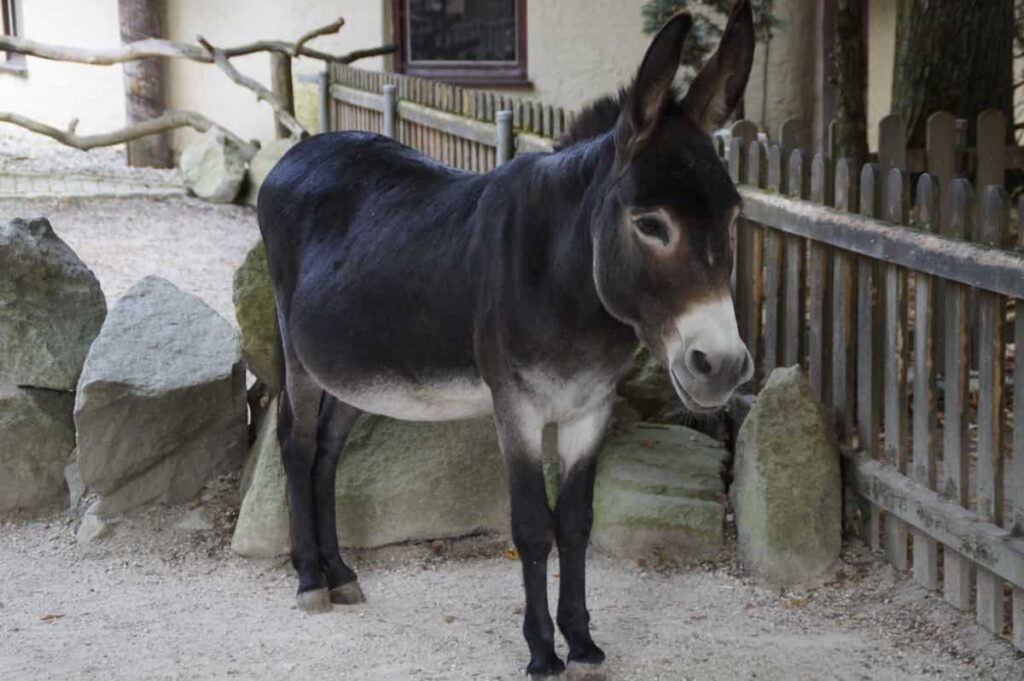
To ensure they don’t undergo stress, they are taken out for grazing in his 20-acre field twice a day, early in the morning and evening. This was all taken care of with the help of workers. There are 120 donkeys on Mr. Balraju’s donkey farm, of which 110 are female and 10 are male. When crossing, the males are made to graze with females. This happens once a year, and each year, a female conceives a kid says, Mr. Balraju. He also added that donkeys are not easily prone to diseases which will cut medicine costs.
For feeding, giving them 3 to 4 different kinds of grass is better. This is one of the important aspects most rearers neglect. When given the same grass every day to feed upon, the animals lose interest in eating it. On Mr. Balraju’s farm, he uses the same types of grass used in buffalo cultivation, along with Supernapier and other grasses, etc. When it comes to storing, the shelf life of raw donkey milk is only 3 hours, but when the milk is pasteurized, it can last up to 2 days.
So the transport should be quick, and you can’t transport this milk to distant places. To make this happen, Mr. Balraju is thinking of expanding his farm. Maintaining a clean environment for these animals plays a crucial role in rearing. On Mr. Balraju’s farm, the workers will clean the farm early every four days. They make sure the whole place looks neat. If this is neglected, then the farm animals will be easily exposed to various diseases, says Mr. Balraju.
Investment and profit analysis of Mr. Balraju’s Donkey farm
On average, considering all three breeds, each donkey produces nearly 900 ml of milk daily. And by taking only 100 female donkeys out of 110, they will be able to produce nearly 90 liters of milk every day. On average, each liter is sold for nearly 5,000 rupees. Mr. Balraju invested nearly 1.5 crores into his donkey farm as an initial investment, and each month, he invests almost 30 lakh rupees per month as a running investment. This running investment includes labor, feed, and other miscellaneous costs. The lactation period for donkeys lasts for seven months.
In case you missed it: How this Farmer Earning 7 Lakh Rupees from his Ivy Gourd Farm: A Success Story for Beginners
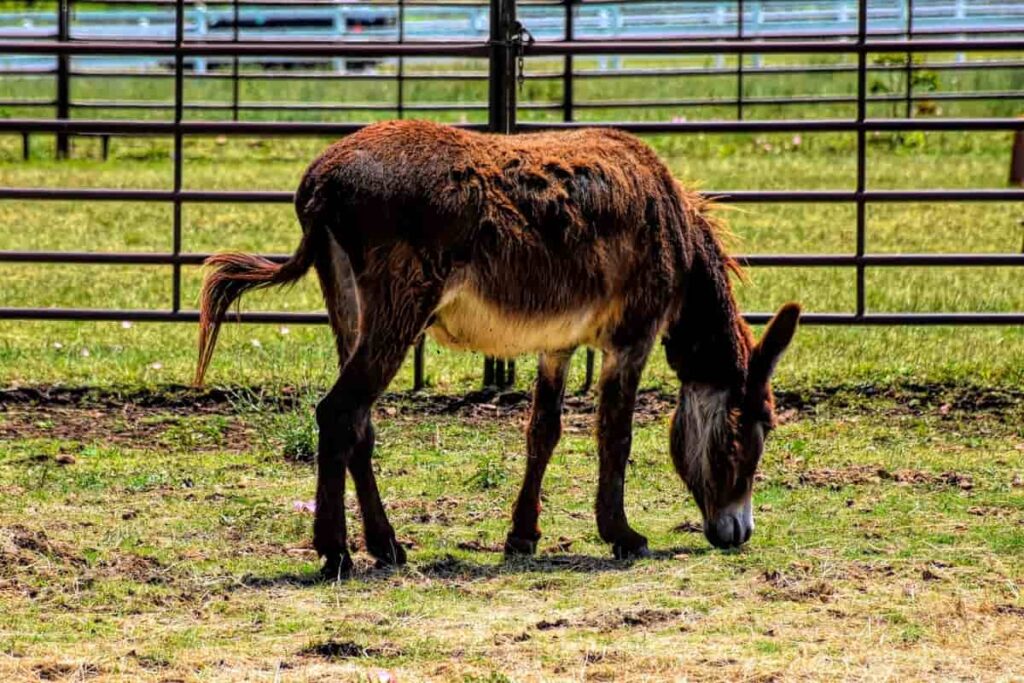
Now, Mr. Balraju gets nearly 1.3 crore rupees if we calculate the monthly income. If we erase the investment, he gets a profit of nearly one crore per month. This is a considerable amount. Per year his profit would be seven crore rupees. Mr. Balraju is very happy that he started this business; he now quit his job and thinking of extending his farms. He wants young people to get into this business as it has a lot of market demand, and the profits are booming. He wants to see as many donkey farms as possible in the future.
- Types of Pesticides Used in Agriculture: A Beginner’s Guide
- Economical Aquaculture: A Guide to Low-Budget Fish Farming
- 15 Common Planting Errors That Can Doom Your Fruit Trees
- How to Make Houseplants Bushy: Effective Tips and Ideas
- Innovative Strategies for Boosting Coconut Pollination and Yield
- Pollination Strategies for Maximum Pumpkin Yield
- The Complete Guide to Chicken Fattening: Strategies for Maximum Growth
- Natural Solutions for Tulip Problems: 100% Effective Remedies for Leaf and Bulb-Related Issues
- Revolutionizing Citrus Preservation: Towards a Healthier, Greener Future
- Natural Solutions for Peony Leaf and Flower Problems: 100% Effective Remedies
- Maximizing Profits with Avocado Contract Farming in India: A Comprehensive Guide
- Natural Solutions for Hydrangea Problems: 100% Effective Remedies for Leaf and Flowers
- The Ultimate Guide to Choosing the Perfect Foliage Friend: Bringing Life Indoors
- From Sunlight to Sustainability: 15 Ways to Use Solar Technology in Agriculture
- The Ultimate Guide to Dong Tao Chicken: Exploring from History to Raising
- The Eco-Friendly Makeover: How to Convert Your Unused Swimming Pool into a Fish Pond
- Mastering the Art of Delaware Chicken Farming: Essentials for Healthy Backyard Flocks
- 20 Best Homemade Fertilizers for Money Plant: DIY Recipes and Application Methods
- How to Craft a Comprehensive Free-Range Chicken Farming Business Plan
- Brighten Your Flock: Raising Easter Egger Chickens for Beauty and Bounty
- How to Optimize Your Poultry Egg Farm Business Plan with These Strategies
- Subsidy for Spirulina Cultivation: How Indian Government Schemes Encouraging Spirulina Farmers
- Ultimate Guide to Raising Dominique Chickens: Breeding, Feeding, Egg-Production, and Care
- Mastering the Art of Raising Jersey Giant Chickens: Care, Feeding, and More
- Ultimate Guide to Raising Legbar Chickens: Breeding, Farming Practices, Diet, Egg-Production
- How to Raise Welsummer Chickens: A Comprehensive Guide for Beginners
- How to Protect Indoor Plants in Winter: A Comprehensive Guide
- Ultimate Guide to Grow Bag Gardening: Tips, Tricks, and Planting Ideas for Urban Gardeners
- Guide to Lotus Cultivation: How to Propagate, Plant, Grow, Care, Cost, and Profit
- Agriculture Drone Subsidy Scheme: Government Kisan Subsidy, License, and How to Apply Online
- Ultimate Guide to Raising Araucana Chickens: Breed Profile, Farming Economics, Diet, and Care
- Bringing Hydroponics to Classroom: Importance, Benefits of Learning for School Students
- Ultimate Guide to Raising Polish Chickens: Breed Profile, Farming Economics, Diet, and Care
- Ultimate Guide to Raising Australorp Chickens: Profile, Farming Economics, Egg Production, Diet, and Care
- Silkie Chicken Farming: Raising Practices, Varieties, Egg Production, Diet, and Care
- Sussex Chicken Farming: Raising Practices, Varieties, Egg Production, Diet and Care
very good information